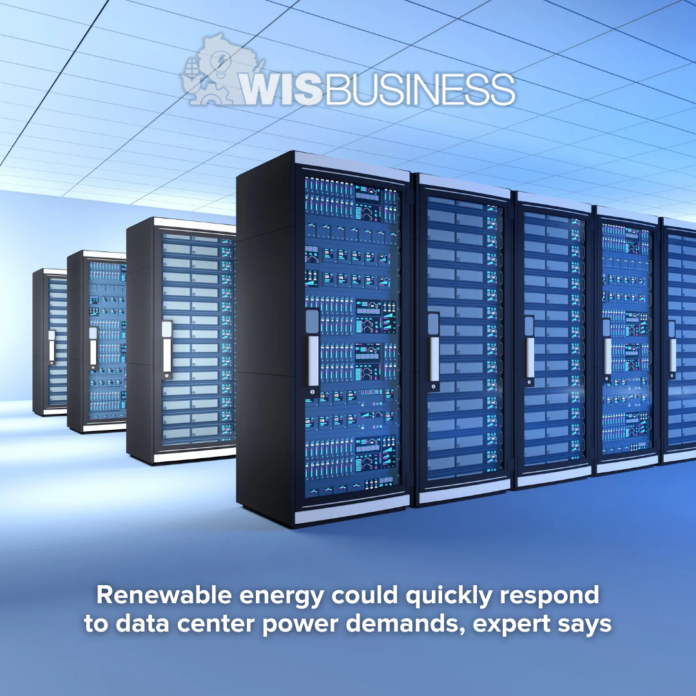Wind and solar power are well-positioned to quickly respond to the increasing load data centers are putting on Wisconsin’s electrical grid, a renewable energy expert argues.
Wisconsin has become a hotbed of data center activity over the past few years, underscored by Microsoft’s more than $7 billion in investments in the southeastern region of the state. Increasing demand on the electrical grid is normal, but data centers are only adding to that demand. The Lawrence Berkeley National Laboratory predicts data center electricity consumption will grow from 176 terawatt hours in 2023 to between 325 and 580 terawatt hours in 2028, which would represent 6.7% to 12.0% of annual U.S. electrical consumption.
David Neely, EDP Renewables’ senior director of development for the central region, told WisBusiness wind and solar power is better positioned than other power generation sources to quickly respond to those demands.
“If you just think simple supply and demand, we do support, kind of an all-in approach for what these utilities can get online. It’s what they need to get online, because there’s a rush to do capacity,” he said. “Renewables is a big, important factor in that.”
Some wind and solar projects can be built and come online in as little as a year, Neely said. That’s compared to roughly four years for traditional natural gas and coal-powered plants, according to International Energy Association data. The same IEA data also shows roughly two-and-a-half years to bring renewable projects online, though.
Wisconsin’s goal to have all electricity consumed be 100% carbon-free by 2050 is also an attraction for both data center and renewable investment, Neely said.
“One of the biggest factors is we can see that the interest in this type of investment, in these companies to invest, is largely guided by where these types of standards and guidelines are in place,” he said. “They’re very, very attracted to states and communities that are very much looking to set a standard and push forward on clean energy goals and renewable energy goals.”
While Neely said there are “gigawatts worth of renewable energy coming online” annually in Wisconsin and surrounding region, that’s not going to be enough to feed all the coming data centers in the state.
“But I do think renewals unleashed would be a big piece in kind of offsetting that demand curve,” he said.
Outside of renewables in the short-term, energy generation would have to come from increasing production at existing, likely outdated and inefficient, energy plants, he added.
“Right now, what they’re doing is essentially turning up some of that unused capacity in an inefficient way to just respond to this in the short term, where renewables just can’t continue to fill it,” he said.
But that’s where wind and solar power come in. Over the years they’ve become an established, reliable and more affordable source of electricity generation that can be constructed in a relatively short amount of time, Neely argued.
And while wind power had its “renaissance period” recently, becoming more efficient, cheaper and easier to build, solar is just in the middle of its renaissance period, Neely said. The two also complement each other well, especially when combined with emerging improvements in battery technology, he added.
“What batteries can do is store all of that and then provide a release of it during the nighttime and flatten that curve,” he said, referring to the electricity generation curve for solar panels, which usually peaks during the daytime.
The biggest barrier to renewable energy, and other electric production types, right now is Wisconsin’s outdated grid, Neely argued.
Wisconsin is in a relatively good position compared to other states because it’s working on studying and updating its power transmission network, Neely said. But most of the grid was designed decades ago without consideration for the current power demands from data centers or any other electric-powered technology that became popular since about the 1980s.
So while new wind and solar farms can start producing power in as little as a year, oftentimes the grid is too congested or not available to connect to and send that power where it needs to go.






